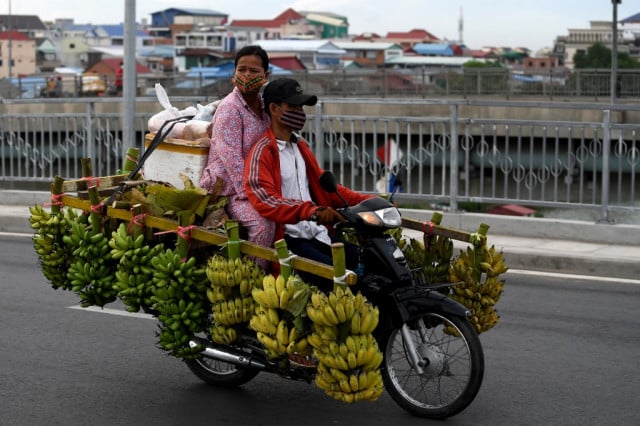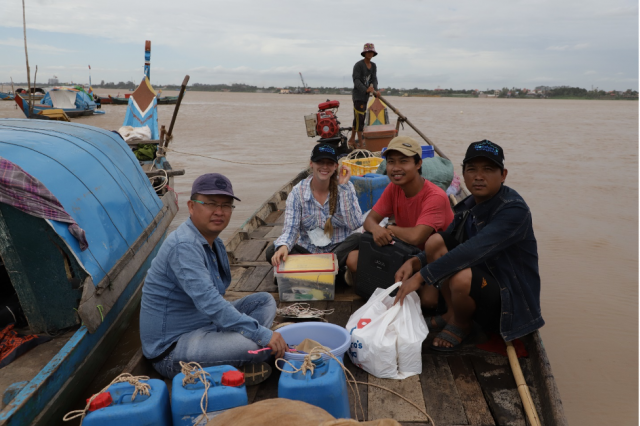Cambodia Spent More than $1.6 Billion on COVID-19 Impact in Two Years

- By Ou Sokmean
- and Sam Sopich
- February 21, 2022 6:19 PM
The Ministry of Economy and Finance reported that Cambodia has spent much of its savings earmarked for combating COVID-19, but borrowing remains low and key sectors are beginning to recover
PHNOM PENH--The government has spent $1.62 billion to manage the impact of the COVID-19 pandemic on key sectors of the economy, according to Vongsey Visoth, secretary of state at the Ministry of Economy and Finance.
The government is ready to spend another $500 million to boost economic growth for 2022, he added.
Speaking during a conference on the Law on National Budget Management on Feb. 18, Vistoth said that the government spent $246 million in 2020 and $1.38 billion in 2021 to counter the COVID-19 pandemic. Another $1 billion is expected to be spent in support of Cambodia’s poorest and most vulnerable in 2022, but Visoth also noted that more will be spent on the provision of healthcare, vaccines and unemployment benefits to the tourism sector.
“This is an issue that we will try to deal with, and we also did well previously. Our economic growth is recovering, the social and macroeconomic situation are good, and our poverty is not so great compared to some countries,” Visoth said.
For 2022, beside the fight against COVID-19, Visoth said that between $40 million and $50 million will be spent by the government on ASEAN related activities as the regional bloc’s chair for the year. An additional $70 million has been earmarked for the commune elections slated for June 2022.
To cover these costs, Visoth said, the government is looking to tighten spending and reduce unnecessary investments, but he didn’t go into detail over specific areas where cuts could, should or would be made.
“Now the problem is that we have to spend a huge amount of money and our income is difficult, so we need to spend a lot of state savings,” Visoth said.
He also noted that while Cambodia had budgeted $1 billion for the 2020 fight against COVID-19, the government only spent $246 million, but then in 2021, $800 million had been put aside for the COVID-19 crisis while more than $1.38 billion was actually spent.
Visoth said that between these unexpected costs and the additional $500 million saved to combat COVID-19 this year, the $3.5 billion that Cambodia had set aside for crises is beginning to run out. However, despite this, Visoth said he is optimistic as Cambodia has not had to increase the national debt to deal with the pandemic.
“Cambodia's borrowing during COVID-19 was normal—not much. What we lack is that we used our savings to complete the expenses, so Cambodia's debt is still good,” Visoth claimed.
According to a Dec. 9, 2021 report from the World Bank, Cambodia’s real GDP growth is projected to reach 2.2 percent this year, impeded by slow growth in services including tourism, construction and real estate. While, other traditional growth drivers, especially garments, travel goods, footwear and bicycle manufacturing industries, as well as agriculture, are underpinning the economic recovery.
UNICEF, which conducted a socio-economic impact assessment of the pandemic in Cambodia in July 2021, also reported that the impact on the tourism, garment and construction sectors had been grave, with reduced productivity and job opportunities created due to a global decrease in demand.
In 2020, the economy was estimated to have contracted by 3.1 percent, following an average growth of 7.0 per cent per annum from 2010 to 2019.
The impacts on employment, and household wage and non-wage incomes were significantly larger than what the macro-economic trends would suggest, UNICEF wrote.
The education system has been heavily affected, especially impacting the youngest learners, as universities, schools and pre-schools faced closure for a considerable part of 2020 which extended to 2021 and now into 2022.















